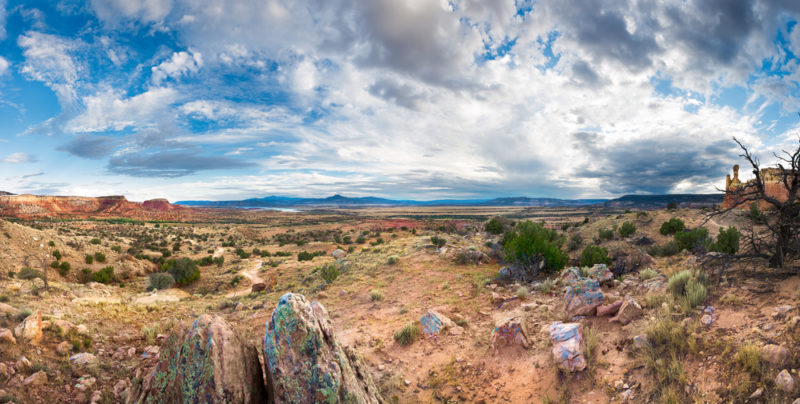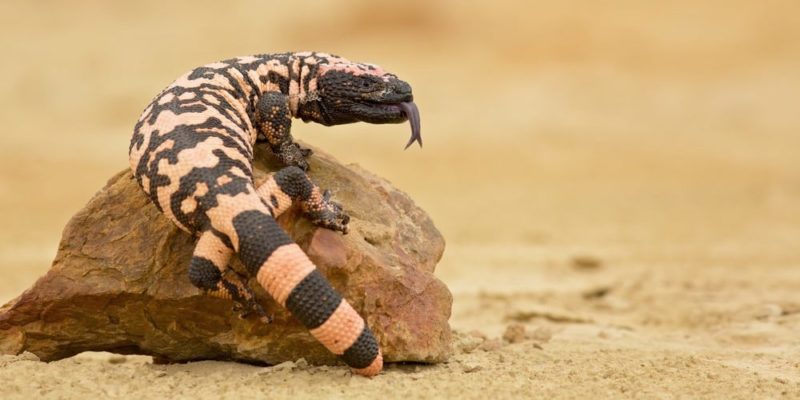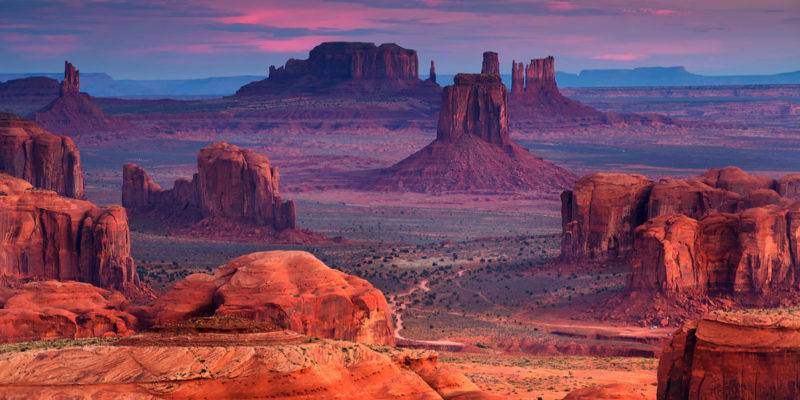We explain what Oasis America is, its characteristics and the main cultures that lived there. In addition, its location, fauna, flora and more.
What is Oasis America?
Oasis America was a specific cultural region that was inhabited between 500 B.C. C. and 1500 d. C. _ It encompassed parts of today's southwestern United States and northern Mexico . Its name comes from the conjunction of the words oasis and Latin , which allude to the terrain of mountain ranges surrounded, both to the east and to the west, by large plains of deserts and oases.
Oasis America included part of the current states of Utah, Arizona, New Mexico, Colorado, California and Texas, in the United States, and part of the states of Sonora, Chihuahua and Baja California, in Mexico. It was part of an even larger and less biodiverse pre-Columbian territory called Arido America , which was bordered to the south by the Mesoamerica region.
The archaeological records of the various cultures that inhabited the Oasis America region are scarce because they did not develop writing , as many Mesoamerican peoples did. In addition, after the Spanish conquest numerous vestiges of pre-Columbian cultures were destroyed .
Characteristics of Oasis America

Among the main characteristics of Oasis Americana are:
- Hostile climate , hot and dry, with little rain .
- The rugged terrain, made up of huge mountain ranges, arid plains and cracked soils .
- The presence of some fertile lands in the oasis regions, which allowed the development of agriculture.
It was an important precious stone for the cultures of the time. Numerous sculptures decorated with turquoise stone were found in the Mesoamerican region. In that region there were no deposits of that mineral and it is estimated that it was commercialized from the American oasis region.
Oasis America was one of the main pre-Columbian cultural areas. However, it was the last one that managed to develop and establish itself in a sedentary way, due to the slow process to incorporate agricultural practices due to the scarcity of water in the region.
Cultures of Oasis America
 The cultures of Oasis America were sedentary due to the practices of agriculture, hunting and gathering . They had in common the work of pottery , weaving, and adobe construction for houses.
The cultures of Oasis America were sedentary due to the practices of agriculture, hunting and gathering . They had in common the work of pottery , weaving, and adobe construction for houses.Between the years 1205 d. C. and 1261 d. C. they had their period of maximum architectural expression. They built large multi-story stepped houses, villages, and towns in present-day New Mexico, Casas Grandes, and Chihuahua regions.
In addition, they built their houses in a simpler way, made up of underground rooms covered with log roofs and mesquite leaves, a tree typical of the desert areas of Mexico.
Regarding clothing, it was composed of loincloths, sandals and a headband. Also, women used to wear a cape or apron and different ornaments, such as necklaces and bracelets, which determined their social level.
The three main Oasis American cultures were:
- The Anasazi culture. It was established in the region known as the "four corners", made up of the current states of Utah, Arizona, New Mexico and Colorado, in a territory with vast juniper forests . The ancient settlers knew how to make the most of natural resources. It was one of the most complex cultures in all of Oasis America and its history dates back to before the 1st century BC. C. until the Spanish subjugation.
- Hohokam culture. It settled in the desert regions of Arizona and Sonora, between the Colorado and Gila rivers. It turned out to be one of the most difficult ecosystems for farming practices. Their cultural development was divided into four periods: Pioneer (from 300 BC to 550 AD), Colonial (from 550 AD to 900 AD), Sedentary (from 900 AD). AD to 1100 AD) and Classic (from 1100 AD to 1450 AD).
- The Mogollon culture. It was established in the region of the Sierra Madre Occidental, a mountain chain that covers all of western Mexico, between 200 BC. C. and 1450 AD. C. It was characterized by cultivation practices and ceramics decorated with paintings . In 1450, before the Spanish invasion, settlers of this culture were no longer found. Anthropologists still do not know what was the reason for their disappearance.
Flora and fauna of Oasis America
 The Oasis-American flora was characterized by xerophytic vegetation ( plants adapted to heat and drought ), such as cacti, bushes and agaves or succulents, capable of storing water in their own tissues.
The Oasis-American flora was characterized by xerophytic vegetation ( plants adapted to heat and drought ), such as cacti, bushes and agaves or succulents, capable of storing water in their own tissues.However, the presence of the rivers that flowed into the oases allowed the existence of more lush vegetation and high-altitude forests in the mountains .
The fauna was characterized by including animals capable of withstanding arid lands and hot climates with little rain, such as arachnids (including the scorpion or scorpion), reptiles (such as the desert iguana) and mammals (such as the fox , buffalo or coyote).
Oasis America on the map
Oasis America spread into an even larger territory, called Arido America , which bordered the Mesoamerican region to the south. This area was inhabited by various cultures that led a nomadic life due to the difficult soil and climate conditions.The peoples of Oasis America, on the other hand, settled in a sedentary manner and made an effort to take advantage of natural resources, such as the rivers that flowed into oases, which allowed them to adapt to the conditions of the region.
End of the cultures of Oasis America
 Until the fourteenth century AD. C. the vast regions of Oasis America were inhabited by various cultures. Then there was a period in which the populations began to reduce in size and moved to other lands, but the causes are still unknown.
Until the fourteenth century AD. C. the vast regions of Oasis America were inhabited by various cultures. Then there was a period in which the populations began to reduce in size and moved to other lands, but the causes are still unknown.As of 1492, with the arrival of the Spaniards on the continent , the entire region suffered the subjugation of the conquerors, which triggered the end of the pre-Columbian cultures.
The above content published at Collaborative Research Group is for informational and educational purposes only and has been developed by referring to reliable sources and recommendations from technology experts. We do not have any contact with official entities nor do we intend to replace the information that they emit.
Cultural journalist with great interest in education and technological innovation in the classroom. The future passes through technology and it is already here. .
Leave a reply
Your email address will not be published. Required fields are marked *Recent post

Sport: What Is It, Types, Risks, Features, Characteristics and Examples

Dogs: Emergence, Features, Characteristics, Feeding and Breeds

Story: Definition, Elements, Structure, Features and Characteristics

